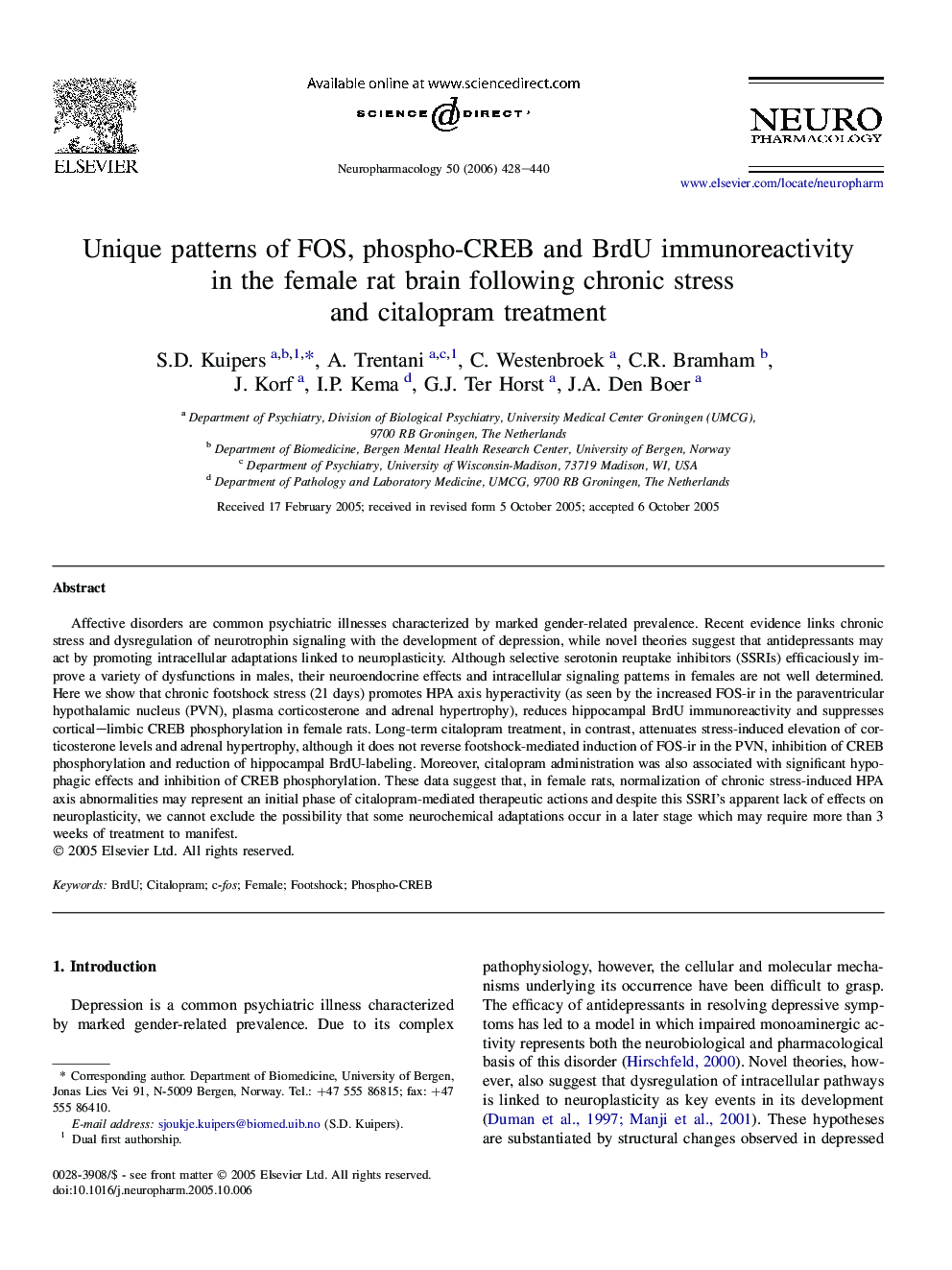| Article ID | Journal | Published Year | Pages | File Type |
|---|---|---|---|---|
| 2495219 | Neuropharmacology | 2006 | 13 Pages |
Affective disorders are common psychiatric illnesses characterized by marked gender-related prevalence. Recent evidence links chronic stress and dysregulation of neurotrophin signaling with the development of depression, while novel theories suggest that antidepressants may act by promoting intracellular adaptations linked to neuroplasticity. Although selective serotonin reuptake inhibitors (SSRIs) efficaciously improve a variety of dysfunctions in males, their neuroendocrine effects and intracellular signaling patterns in females are not well determined. Here we show that chronic footshock stress (21 days) promotes HPA axis hyperactivity (as seen by the increased FOS-ir in the paraventricular hypothalamic nucleus (PVN), plasma corticosterone and adrenal hypertrophy), reduces hippocampal BrdU immunoreactivity and suppresses cortical–limbic CREB phosphorylation in female rats. Long-term citalopram treatment, in contrast, attenuates stress-induced elevation of corticosterone levels and adrenal hypertrophy, although it does not reverse footshock-mediated induction of FOS-ir in the PVN, inhibition of CREB phosphorylation and reduction of hippocampal BrdU-labeling. Moreover, citalopram administration was also associated with significant hypophagic effects and inhibition of CREB phosphorylation. These data suggest that, in female rats, normalization of chronic stress-induced HPA axis abnormalities may represent an initial phase of citalopram-mediated therapeutic actions and despite this SSRI's apparent lack of effects on neuroplasticity, we cannot exclude the possibility that some neurochemical adaptations occur in a later stage which may require more than 3 weeks of treatment to manifest.
